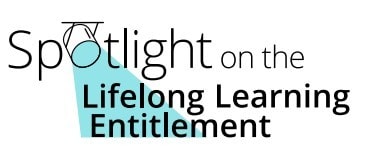Spotlight on the Lifelong Learning Entitlement
Key findings & recommendations
In order to drive demand for the LLE, policymakers will need to:
- Boost awareness of the LLE. Significant efforts will be requiredto ensure the wider public is familiar with the LLE and supportedto navigate the options available.
- Demonstrate the Return on Investment. People are sceptical about taking out a loan, and need convincing that they will see a return on the time, effort and money invested in upskilling.
- Fit learning around busy lives. Finding the time to learn new skills is a major barrier for many adults, so the LLE must be as flexible as possible.
- Reach those most in need of new skills: The individuals that would most benefit from upskilling may struggle to access level 4 or 5 education without improved progression pathways from levels 1 to 3.
In order to create appropriate supply for the LLE, policymakers will need to:
- Minimise the regulatory burden: Awarding organisations may have a role in supporting providers and reducing any red tape associated with delivering the LLE.
- Maximise the potential for modular learning: There is scope to move further away from conventional degree structures and “parent course” requirements.
- Clarify the practicalities of credit stacking: The LLE depends on the portability of learning credentials, necessitating urgent collaboration between providers.
- Reimagine the proposed skills transcript: There is an opportunity to build a more dynamic picture of a student’s knowledge and skills.
For more on these and other recommendations see the full report.

